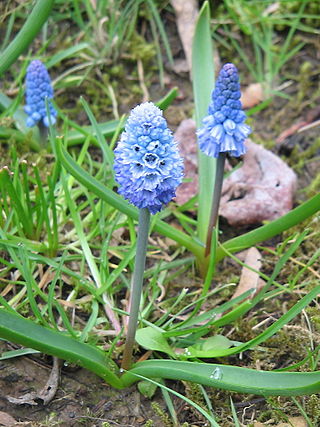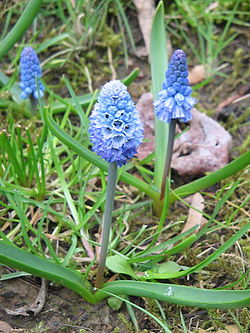Top Qs
Timeline
Chat
Perspective
Muscari azureum
Species of flowering plant From Wikipedia, the free encyclopedia
Remove ads
Muscari azureum (syn. Pseudomuscari azureum), the azure grape hyacinth, is a species of flowering plant in the family Asparagaceae, native to Turkey. A bulbous perennial, it is grown in gardens for its spring flowers. The Latin specific epithet azureum means "bright blue",[2] a reference to its flower colour.
Remove ads
Description
Muscari azureum is a small plant, around 4–15 cm (1.6–5.9 in) high with two to three grey-green leaves per bulb. Up to 60 flowers are borne in Spring (March or April in the Northern Hemisphere) in a dense "spike" (raceme). Each flower is 4–5 mm (0.16–0.20 in) long and bright blue in colour with a darker stripe along each of the lobes. A feature which distinguishes species placed in subgenus Pseudomuscari, like M. azureum,[3] from other groups of Muscari is that the mouth of the flower is not narrowed but forms an open bell-shape. It grows in alpine meadows in north and east Turkey.[4][5]
Remove ads
Cultivation
M. azureum may be found in horticultural sources under the illegitimate name Hyacinthus azureus. The species is popular as a spring-flowering bulb; Brian Mathew describes it as "a delightful plant" for use in rock gardens or underneath shrubs.[4] It is frost-hardy and should be grown in full sun.[5] It has gained the Royal Horticultural Society's Award of Garden Merit.[6][7] There is a white cultivar, 'Album'.[4]
Remove ads
References
Wikiwand - on
Seamless Wikipedia browsing. On steroids.
Remove ads

